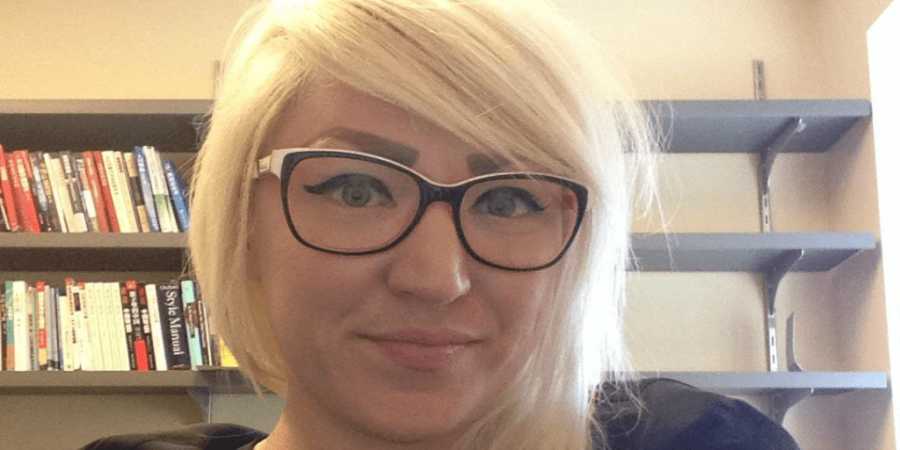Aasiya was killed in the very space where she tried to promote a broader understanding of Islam. Like many other domestic violence victims who endure years of abuse before deciding to leave their partner, she may have been held back by her abusers’ threats, isolation, and fear of stigma
In the shadow of Sept. 11th, an American Muslim man and his wife start a television station to counter the media’s jaundiced portrayal of Muslims as violent fanatics. A few years later when this man’s wife decides to leave him, he kills her in a manner made infamous by violent Muslim fanatics: beheading.
This is not a soap plot crafted by a malicious Islamophobe—although as an American Muslim, I find myself wishing it was. Rather, it is likely an all-too-accurate account of the recent murder of a Muslim woman in Orchard Park, New York.
On Feb. 12th, Aasiya Hassan was discovered beheaded in the television station office where she and her husband, Muzzammil Hassan, strove to show Muslims in a positive light. Muzzammil visited police hours after the murder and gave them the location of his wife’s body. He had argued earlier in the day with Aasiya, who placed an order of protection against her husband and recently filed for divorce after years of abuse.
It is doubtlessly true that millions already instilled with a prejudicial perspective have derived a smug sense of vindication from this event. “After all,” might have said those with anti-Islamic suspicions, “if one Muslim who claimed to be good could do this, imagine what the rest of them must be like.”
It is equally doubtless that many American Muslims have responded in a defensive fashion. Faced with the usual media interrogators whose tendency to link religion with violence surfaces with selective precision, we have breathlessly quoted the Quran and Hadith to show that there is no religious justification for this heinous act. But in confining our answers within these limits, we have hardly dented the loaded assumption that domestic violence is a uniquely Muslim problem regardless of what we claim our texts say.
As someone who does outreach work in the domestic violence field, I am often asked with genuine curiosity whether domestic violence is more prevalent in one community than another, or whether there exists a specific “cause,” be it religious, chemical, or cultural.
It might be a tremendous relief for many if one group alone could be held culpable: most of us could then pat ourselves on the back, puff up with pride on behalf of our particular tribe, and carry on with the rest of our lives while simply avoiding whatever stigmatized group was deemed responsible.
Unfortunately, the truth rarely makes room for such self-serving pleasant fictions. Domestic violence is a pervasive phenomenon that afflicts communities everywhere.
Here in America, almost a quarter of women have been raped or sexually assaulted by current or past partners or acquaintances, according to a 1996 study conducted by the Department of Justice. In 2005, according to the FBI, 789 white and 337 black women were killed by intimate partners; 44 women falling into neither racial category met the same fate. And a report released this month by a coalition of Minnesota agencies confirmed what domestic violence agencies here have long known: abused women are in greatest danger precisely when they try to leave—as Aasiya did.
Nonetheless, some tendentious media outlets and pundits have pounced on the sensationalistic aspect of Aasiya’s murder to emphasize the old message that the Islamic “Other” cannot be comprehended by, much less compared to, “regular” Americans.
Even those who should know better have succumbed to predictable stereotyping. A day after the crime, NOW’s New York State President Marcia Pappas said the act was “a terroristic version” of what she called an “honor killing” based on nothing but the alleged attacker’s religious identity, despite all the markers associated with a domestic violence case: priory history of abuse, an order of protection, and divorce proceedings. Such misapplied, coded language quarantines and exoticizes abuse along “religious” lines, obscuring clear commonalities.
How might Pappas’ dubious distinction apply with respect to the eight victims of Bruce Pardo—the white, churchgoing Catholic who dressed up as Santa Claus and shot and set aflame his ex-wife’s entire family last Christmas, including an eight-year-old girl? Or the two victims of Joseph Pallipurath, an Indian immigrant who tracked his estranged wife across the country and shot her and a bystander dead in a New Jersey church last November? Are these deaths—or that of other victims—less tragic or less real because they cannot be sealed into the ‘Otherizing’ chamber of “honor killing?” Does a bullet kill less than a blade?
That domestic violence does indeed exist across all communities is still no excuse for Muslims to minimize its occurrence in our own community. And that others may seize upon the issue for the explicit purpose of attacking Muslims is still no reason for Muslims to show a lack of purpose in defending women from cowardly abusers.
The vice president of the Islamic Society of North America, a well-known mainstream organization, took a firm step in the right direction when he issued a powerful statement that read in part:
This is a wake up call to all of us, that violence against women is real and can not be ignored. It must be addressed collectively by every member of our community…I call upon my fellow imams and community leaders to never second-guess a woman who comes to us indicating that she feels her life to be in danger. We should provide support and help to protect the victims of domestic violence…
Aasiya was killed in the very space where she tried to promote a broader understanding of Islam. Like many other domestic violence victims who endure years of abuse before deciding to leave their partner, she may have been held back by her abusers’ threats, isolation, and fear of stigma. It is painful—but necessary—to contemplate the possibility that she was also burdened by an additional factor: worry that identifying her husband as an abuser and leaving him would legitimize the narrow, negative view of Islam she was working to overturn.
Perhaps the best way of honoring Aasiya’s efforts to improve Islam’s image in American eyes, then, is to redirect our own gaze inward and improve not only the image, but the reality, of American Islam.
M. Junaid Levesque-Alam blogs about America and Islam at Crossing the Crescent and writes a column on American Muslim identity for WireTap magazine. He has been published in CounterPunch, The Nation (online), The American Muslim and other venues. He works as a communications coordinator for an anti-domestic violence agency in NYC and can be reached at: junaidalam1 AT gmail.com.



